Feature: Knittyspin
INTRODUCTION
Knittyspin
Let there be light! Or How to Lighten a Colorway at Your Wheel
Sometimes there are variegated colorways that I like, but for a particular project or just because of my mood on that particular day, it seems too dark. So I lighten them. I don’t change the colors. Instead I add in a natural or semi-solid that's lighter than colorway, and the overall effect is lighter. The colorway is still there, even the striping is still there, but it looks and feels lighter. The best part? I do this all at my wheel – no special tools needed.
It works because of optical blending (small dots of color that are sophysically close together that they blend when you look at them – like pointillist painting). Plying or drafting colors together creates blips or dots of color that meld together visually in the yarn and even more so when the yarn is knitted. In this case I’m not trying to create a new color, just trying to lift existing colors a little.
I like to work at the wheel to lighten colorways without completely blending them by carding or combing. I like to have the colorway still intact, but to add something to it. I work with plying and drafting colors together in different ways. These methods allow a mixture of lighter spots without disturbing the colorway. I like the visual motion and texture it creates in my yarn and knitting.
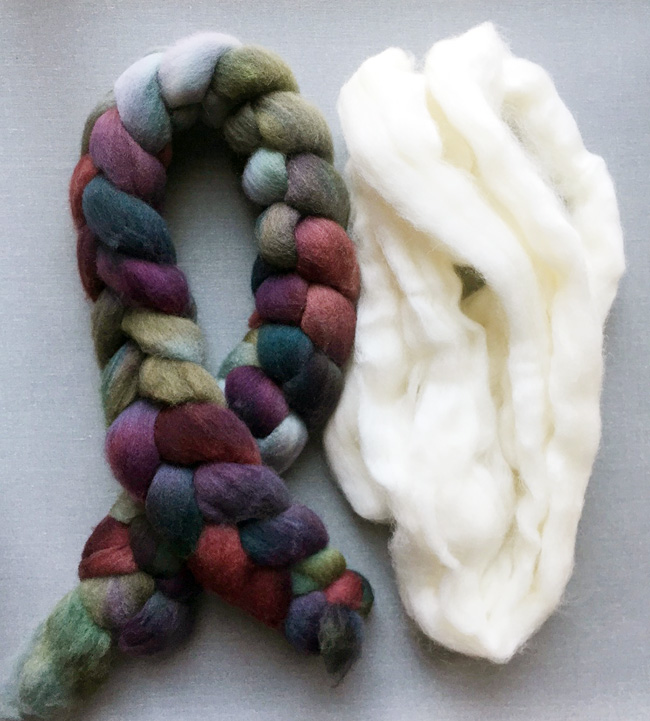
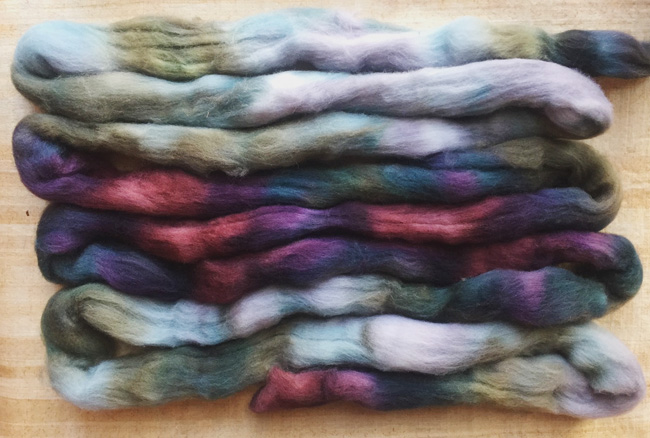
For these samples I used a dark colorway: Godwood on Falkland by Into the Whirled, and white Corriedale from Louet. These two have huge contrast, which may create a look you like or don’t like so much. You can always use a natural or a solid/semi solid color that doesn’t have as much contrast. I wanted my samples to really show what was going on in the yarn clearly so I went for the highest contrast.
All of the yarns are two-ply, drafted woolen on top, plied to balance and snap finished.
It’s in the plying that next level magic happens with these yarns. The lightening effects all look cool as singles, but when plied on the same type of singles, the colors and white and marling all combine in different ways. Sometimes they match, but most of the time they pair with a different effect. It makes knitted fabric that is really exceptional.
Here is a sample of the colorway spun and plied plain, no additions. It’s moody and beautiful.

If you want to really shake up your color, try a marl. This marl is one ply of the colorway and one ply of white. A marl with this much contrast between dark and light really interrupts the colorway. The knitted swatch looks like snow on top of the striping of the colorway.
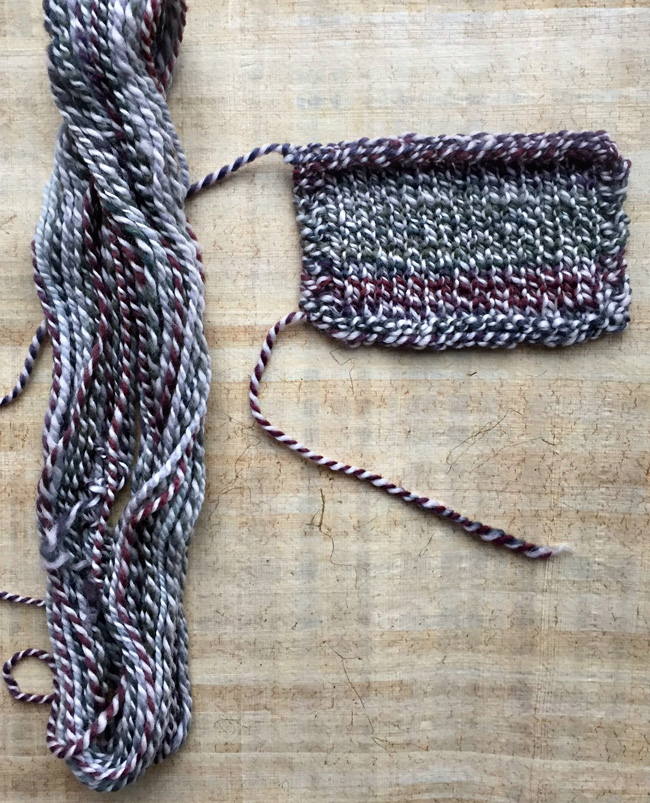
Marled with white, a bold statement
Probably my favorite method of changing colorways is to draft together (sometimes called combo drafting or double marl) a colorway and a natural. This creates a finished look that reminds me of watercolor, a wash of white over the colorway. To draft together, hold a strip of the colorway and a strip of white (or your chosen natural) and draft them together as one. The combined width of the two fibers shouldn’t be bigger than two fingers wide, and the natural should be 1/3 and the colorway 2/3 of the total.
Drafting together creates a marl in the single and when plied on the same creates a double marl, with tiny dots of color that softly blend.
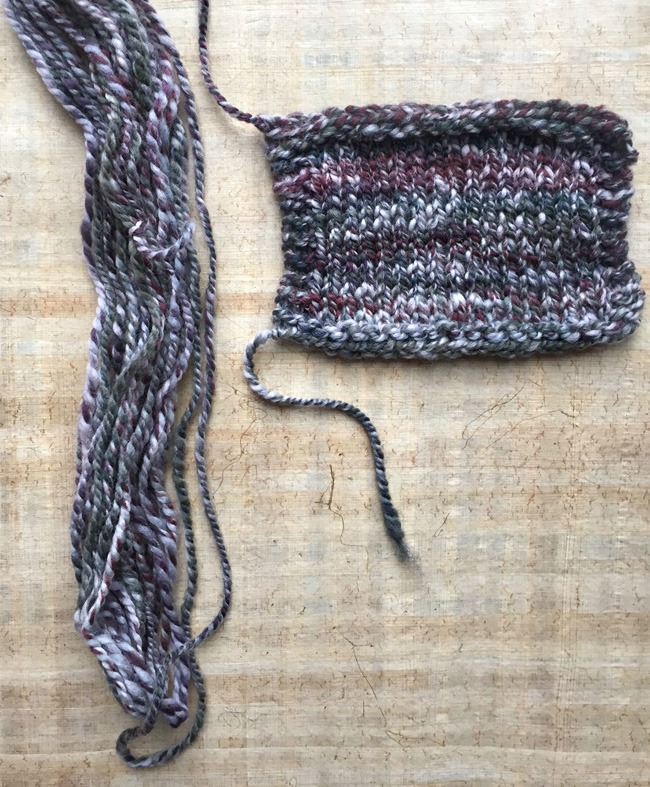
Drafting together creates a wash of lightness

Drafting together creates a marl in the single
Blocking is another way to lighten a colorway with a more random look. I blocked the sample below by spinning the colorway for a bit, breaking it off, spinning white, breaking it, going back to the colorway and repeating. When plied, the finished look has a little colorway as is and a little marling. I tend to freestyle the amounts of each, only making sure to start each ply at a different spot in the color rotation.
If you want more control in the amount of color vs white, you can count. When I count, I count drafts. I join the new fiber and draft once, then I count each draft either forward or back. I like less white, so my proportions might be 12 drafts of color and 3 drafts of white.
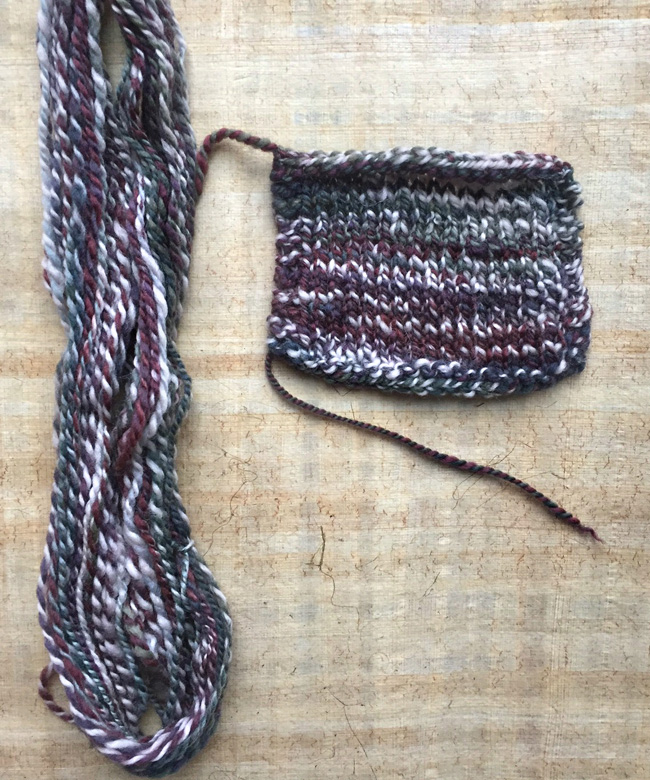
Blocking scatters the white over the colorway and matches the white to white and color to color randomly
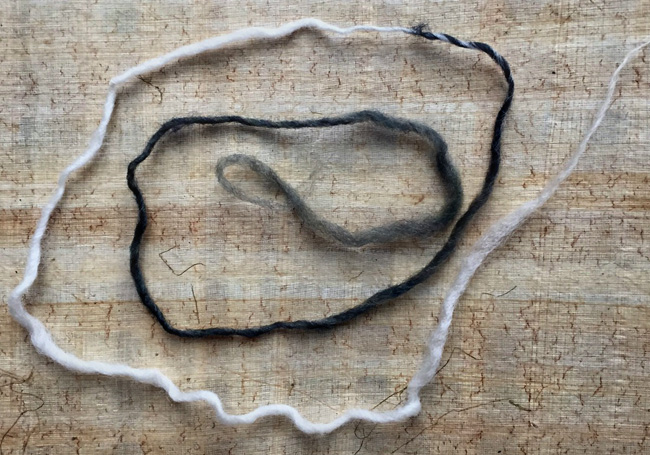
By controlling the lengths of white, you can control the amount of white in your yarn.
Of course you can get spectacular effects by combining a few of the techniques. This sample combines the colorway plain for a stretch, white for a few drafts, then the colorway and white drafted together, then repeated, and plied on a similar single. I like how the color and white seem very organically distributed in the knitted swatch, like there is no real pattern.
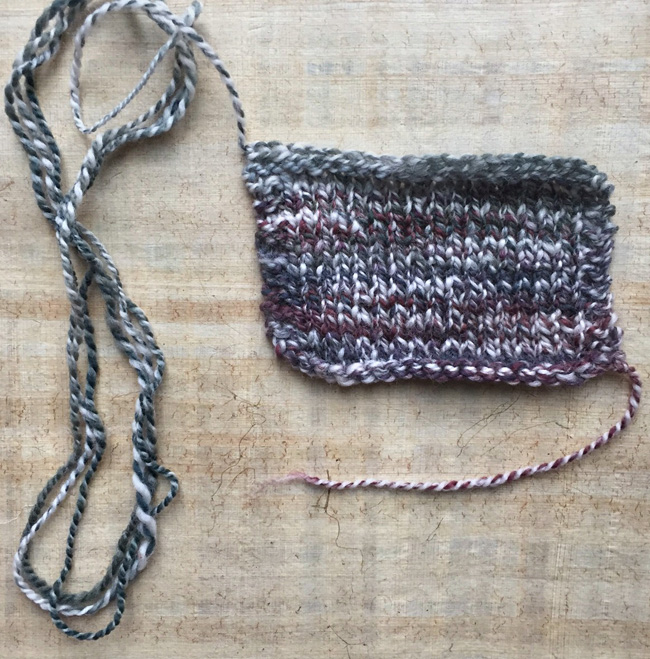
Mix them all up, color, white and drafted together to create a wonderfully jumbled yarn.
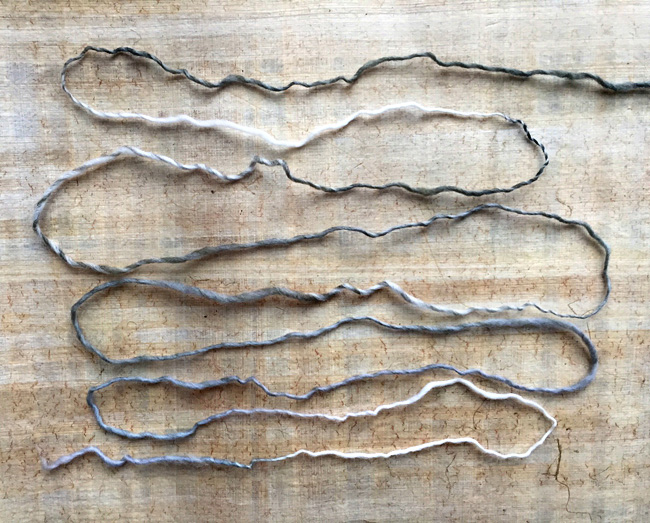
I like to have the drafted-together bits be the longest in my most mixed up yarns..
Here are the swatches all together. The difference when you look at them individually seems really small, but looking at the swatches together always excites me. They are similar, yes, but each has a different feeling: drafted has a soft feeling visually, blocking has punches of white and marl, and combining the two techniques gives swathes of softness accentuated with pops of white and solid colorway.

Top: Drafted together, middle: blocked, bottom: combining plain. Blocked and drafted together.
For my personal spinning and knitting, I tend to work with less contrast. Remember how I said I was using high contrast between dark and light in these samples so you can really see what happening in the yarn?
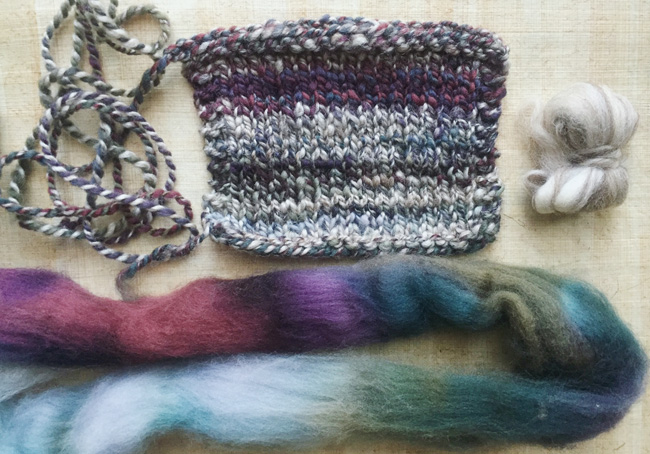
Here’s a sample using a humbug (black and white mixed) BFL as the natural element. The BFL blends on itself as it drafts, making a brownish grey, and also drafts with the colorway.
The yarn is the most mixed- up type of sample: colorway as it is, natural, colorway drafted with natural, worked one after the other in a random pattern length, then plied on itself. I really like working with less contrast . There’s more subtlety about what’s going on in the yarn and I find the result stunning.
But there is no wrong answer! Everyone has a favorite amount of contrast and style of changing the colorway.
There are many, many more ways to work with just a colorway and a natural color: adding more plies, working with plies that have been manipulated in different ways, using different breeds or blends. Check out the KnittyBlog over the next few weeks, because I’m working on more samples with these techniques.




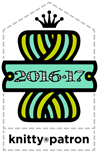
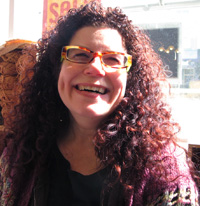 Jillian Moreno is the editor of Knittyspin. She's on the Editorial Advisory board for
Jillian Moreno is the editor of Knittyspin. She's on the Editorial Advisory board for